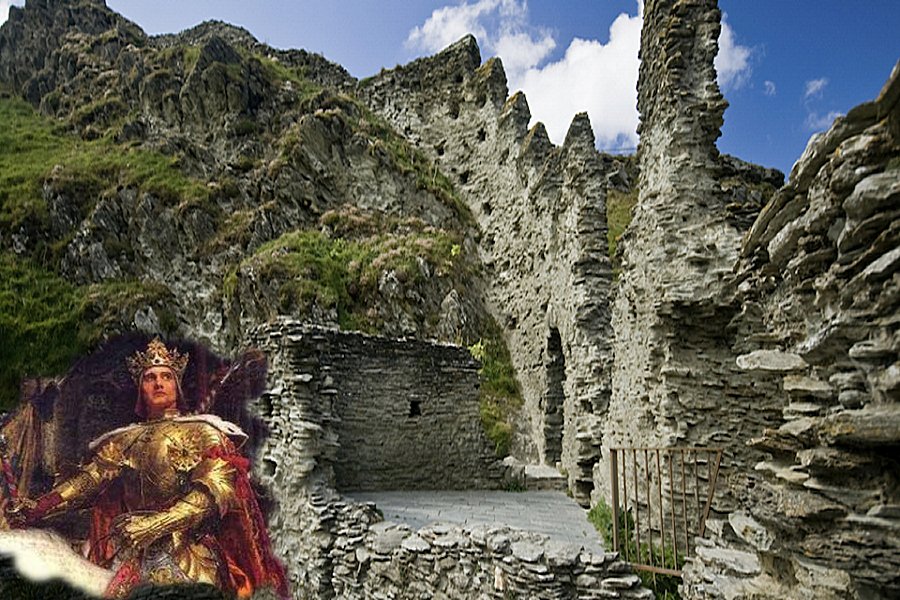Was Tintagel Castle A Fortress Used By Iconic Hero King Arthur?
A. Sutherland - AncientPages.com - Ancient Tintagel Castle has quite spectacular natural topography, particularly the eroded neck of land dividing the island from the mainland.
Located on both sides of the chasm, the Castle experienced centuries-long erosion.
It practically 'consumed' many parts of it along with earlier buildings. Split in two by the force of the sea and ruined, the Tintagel Castle was once the fortress used by King Arthur.
Iconic hero King Arthur was first linked to Tintagel in the 12th century when Geoffrey of Monmouth named it the place where Arthur was conceived.
One legend is that the infant Arthur, probably of mixed Roman and British parentage, was thrown by the waves on the beach by Merlin's cave. He is identified with the known history of a Celtic chieftain of the 5th century, a great warrior who led his fellow citizens in the West in their resistance against Saxon invaders.
The marriage of Arthur and Guinevere. Image credit: Speed Lancelot (1860-1931) - Scan of illustration at title page in a book of The Legends of King Arthur and His Knights (Facing p. 78), 1912., 9th edition. Ed. Sir James Knowles, K. C. V. O. London; New York: Frederick Warne and Co., 1912 - Public Domain
The original fortress is long gone, but archaeologists have found proof in their diggings on the Tintagel Castle that fifth-century citizens lived on the site.
The replacement castle was built between 1230 and 1236 and is now nearly 800 years old. The Castle was in ruins within two hundred years and remains so.
There is something special about Tintagel. Its associations with the legendary King Arthur date back to the twelfth century.
This iconic hero was for the first time linked to Tintagel by Geoffrey of Monmouth, the medieval author of "History of the Kings of Britain," who, in the story "Once and Future King," confirms it as the place where Arthur was conceived with the help of Merlin.
Geoffrey places the event at Tintagel Castle, which was said to be the home of the Duke of Cornwall, Gorlois, and his enchanting wife, Ygerna. Some 700 years later, the great Victorian poet laureate, Alfred Lord Tennyson, in "Idylls of the King," begins his story of Arthur at Tintagel.
Was it just a coincidence? Why did the authors choose this particular place for their stories? Were they inspired by an ancient oral or written tradition that associated Arthur with Tintagel?
Geoffrey of Monmouth's History of the Kings of Britain contains the earliest written mention of Tintagel. The tale tells how Arthur was conceived there by Uther Pendragon, King of Britain, because of his magically assisted seduction of Queen Igerna (Igraine), wife of Duke Gorlois of Cornwall.
Enigmatic Tintagel Castle is a very ancient place; its visible ruins date back to the 13th century, but according to archaeological excavations, there were other older ruins on this site.
Dr. C.A. Ralegh Radford (1900- 1999) excavated the site in the 1930s. He believed that the earlier Tintagel was a Celtic monastery dating back to around the fifth century, the supposed time of Arthur.
Further excavations in the 1990s have shown that it was not a monastic site but the stronghold of a powerful, dark-age chieftain.
Who was the mysterious man?
Written by – A. Sutherland AncientPages.com Staff Writer
Copyright © AncientPages.com All rights reserved. This material may not be published, broadcast, rewritten or redistributed in whole or part without the express written permission of AncientPages.com
Expand for referencesMore From Ancient Pages
-
 Explorer Discovered A Lost Underground World Beneath Big Sur In North America – But Why Cannot Anyone Else Find It Now?
Ancient Mysteries | Feb 12, 2019
Explorer Discovered A Lost Underground World Beneath Big Sur In North America – But Why Cannot Anyone Else Find It Now?
Ancient Mysteries | Feb 12, 2019 -
 Evidence Of Frightening Rituals Practiced By Ancient Steppe Nomads In Siberia – Discovered
Archaeology | Sep 19, 2020
Evidence Of Frightening Rituals Practiced By Ancient Steppe Nomads In Siberia – Discovered
Archaeology | Sep 19, 2020 -
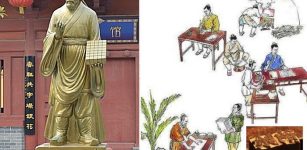 Chinese Invention: World’s First Known Movable Type Printing
Ancient History Facts | Dec 30, 2014
Chinese Invention: World’s First Known Movable Type Printing
Ancient History Facts | Dec 30, 2014 -
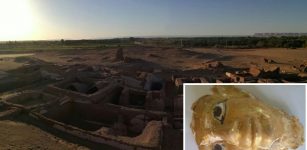 Five Ancient Roman Tombs With Different Architectural Style Discovered In Egypt
Archaeology | Aug 26, 2017
Five Ancient Roman Tombs With Different Architectural Style Discovered In Egypt
Archaeology | Aug 26, 2017 -
 2,000-Year-Old Fountain In Kibyra, The City Of Gladiators Flows Again
Archaeology | Jan 3, 2023
2,000-Year-Old Fountain In Kibyra, The City Of Gladiators Flows Again
Archaeology | Jan 3, 2023 -
 Stunning Reconstruction Of Caterthun Iron Age Forts In The Grampian Mountains, Scotland
Civilizations | Nov 17, 2016
Stunning Reconstruction Of Caterthun Iron Age Forts In The Grampian Mountains, Scotland
Civilizations | Nov 17, 2016 -
 Something Surprising Happened With Temperature Since The Start Of The Holocene – New Study
Archaeology | Oct 10, 2022
Something Surprising Happened With Temperature Since The Start Of The Holocene – New Study
Archaeology | Oct 10, 2022 -
 Countess Loretta Of Sponheim Kidnapped Archbishop Of Trier And Got Away With It
Featured Stories | Sep 26, 2018
Countess Loretta Of Sponheim Kidnapped Archbishop Of Trier And Got Away With It
Featured Stories | Sep 26, 2018 -
 Is The Intriguing Underwater Structure Beneath Lake Michigan Man-Made Or A Natural Formation?
Featured Stories | Dec 7, 2023
Is The Intriguing Underwater Structure Beneath Lake Michigan Man-Made Or A Natural Formation?
Featured Stories | Dec 7, 2023 -
 Ancient Ruins Of Quilmes: Largest Pre-Colombian Settlement In Argentina
Featured Stories | Mar 28, 2019
Ancient Ruins Of Quilmes: Largest Pre-Colombian Settlement In Argentina
Featured Stories | Mar 28, 2019 -
 World’s Oldest Tattoos Discovered On Egyptian Mummies Re-Write History Of Tattoos
Archaeology | Mar 2, 2018
World’s Oldest Tattoos Discovered On Egyptian Mummies Re-Write History Of Tattoos
Archaeology | Mar 2, 2018 -
 On This Day In History: Unua Libro ‘First Book’ Describing Esperanto Published – On July 26, 1887
News | Jul 26, 2016
On This Day In History: Unua Libro ‘First Book’ Describing Esperanto Published – On July 26, 1887
News | Jul 26, 2016 -
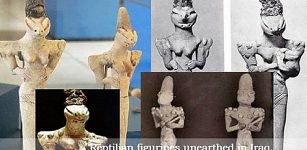 The Mystery Of The Serpent Seed
Biblical Mysteries | Jul 19, 2019
The Mystery Of The Serpent Seed
Biblical Mysteries | Jul 19, 2019 -
 Four Roman-Era Brooches And A Ring Found In The Borki Forest, Poland
Archaeology | Mar 15, 2024
Four Roman-Era Brooches And A Ring Found In The Borki Forest, Poland
Archaeology | Mar 15, 2024 -
 Mysterious Sumerian Star Tablet And Strange Divine Omens – Sacred Knowledge Of The Gods – Part 1
Ancient Mysteries | Feb 14, 2021
Mysterious Sumerian Star Tablet And Strange Divine Omens – Sacred Knowledge Of The Gods – Part 1
Ancient Mysteries | Feb 14, 2021 -
 Sailing With The Phoenicians: Great Traders, Sailors And Navigators
News | Sep 6, 2015
Sailing With The Phoenicians: Great Traders, Sailors And Navigators
News | Sep 6, 2015 -
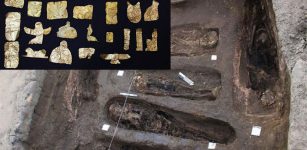 Unearthed Ancient Egyptian Tombs At Tel El-Deir Will Rewrite The History Of Damietta – Archaeologists Say
Archaeology | Dec 27, 2022
Unearthed Ancient Egyptian Tombs At Tel El-Deir Will Rewrite The History Of Damietta – Archaeologists Say
Archaeology | Dec 27, 2022 -
 Mysterious Water Source Belonging To The Goddess Of The Cold Kingdom Of Evil Remains An Archaeological Puzzle
Ancient Mysteries | Dec 6, 2019
Mysterious Water Source Belonging To The Goddess Of The Cold Kingdom Of Evil Remains An Archaeological Puzzle
Ancient Mysteries | Dec 6, 2019 -
 Scientists Caution Against Over-Interpreting Influence Of Climate On Cultural Change And Catastrophe
Archaeology | Aug 18, 2022
Scientists Caution Against Over-Interpreting Influence Of Climate On Cultural Change And Catastrophe
Archaeology | Aug 18, 2022 -
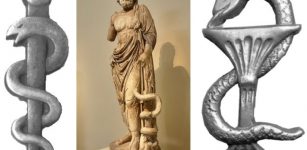 Why Is A Snake Symbol Of Medicine And Pharmacies?
Ancient History Facts | Jan 15, 2018
Why Is A Snake Symbol Of Medicine And Pharmacies?
Ancient History Facts | Jan 15, 2018



